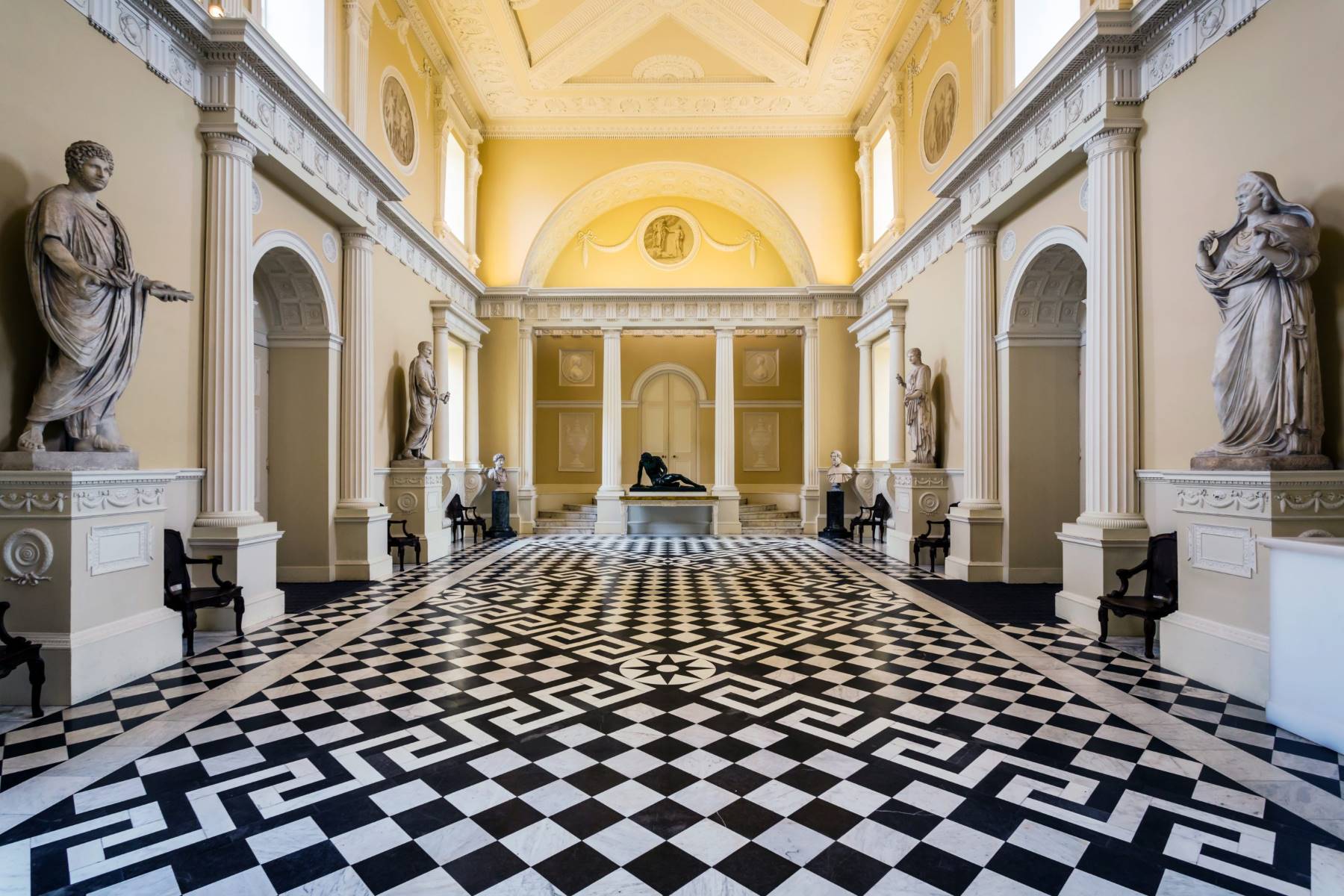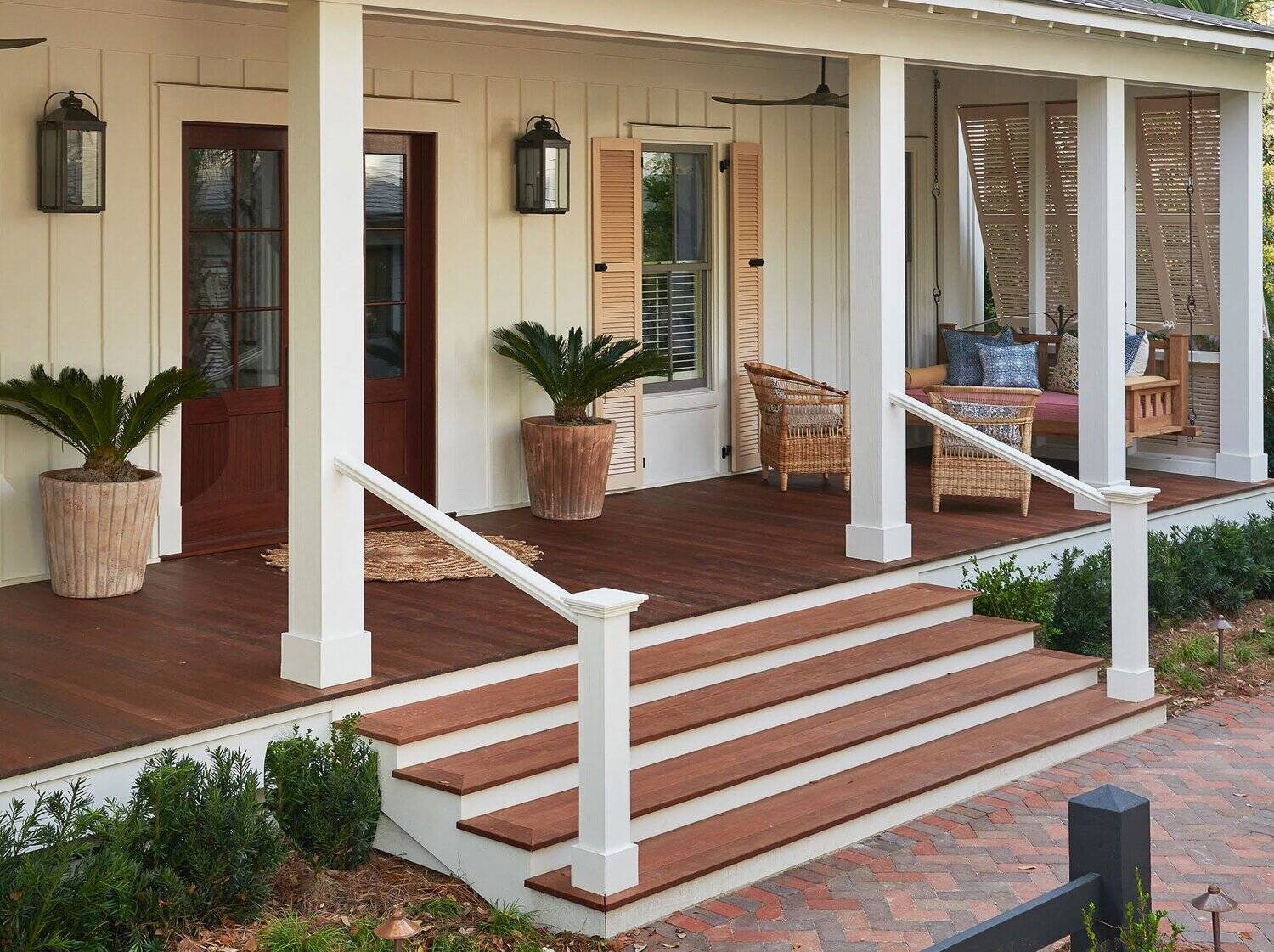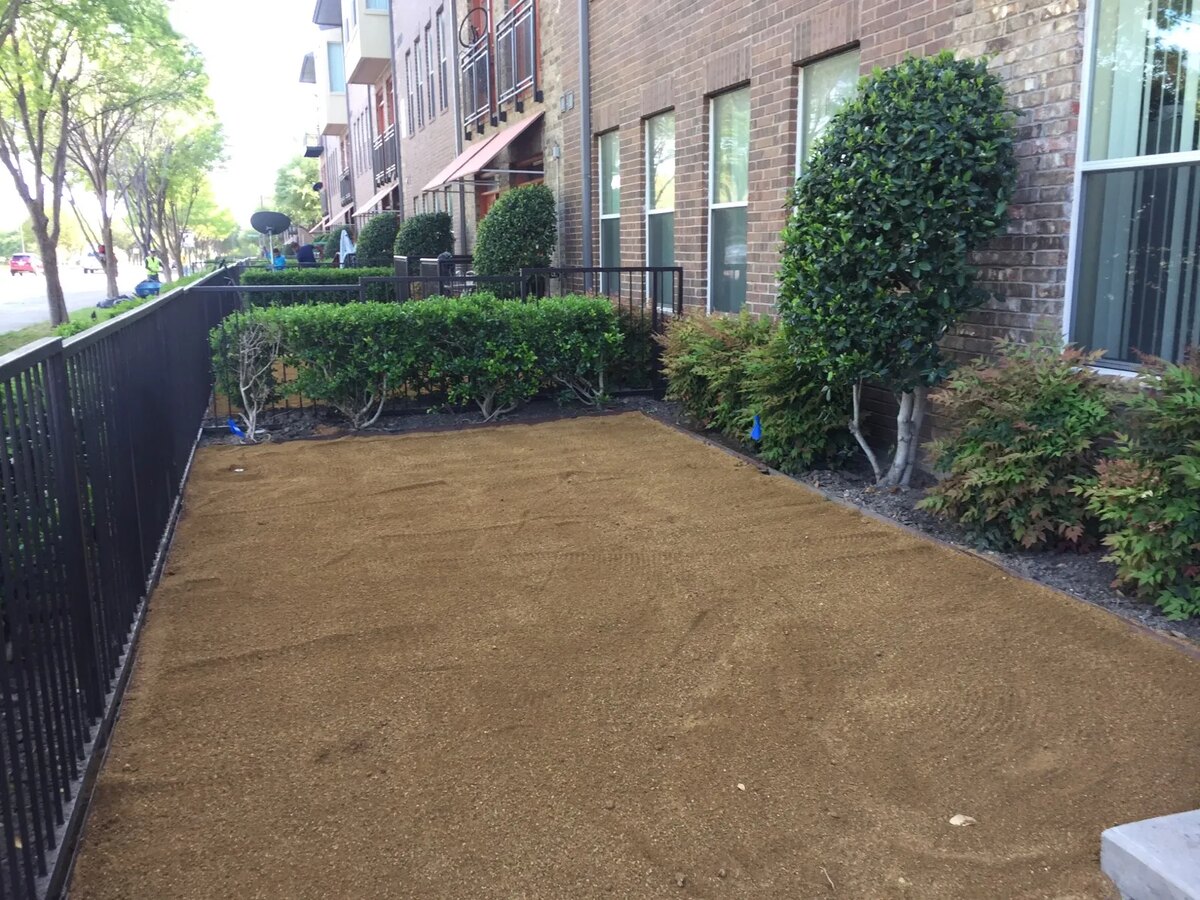Home>diy>Architecture & Design>What Is The Design Of Robert Adams’ Syon House Based Upon?


Architecture & Design
What Is The Design Of Robert Adams’ Syon House Based Upon?
Modified: January 19, 2024
Explore the architecture and design of Robert Adams' Syon House, which draws inspiration from classical elements and showcases exquisite craftsmanship in its timeless structure.
(Many of the links in this article redirect to a specific reviewed product. Your purchase of these products through affiliate links helps to generate commission for Storables.com, at no extra cost. Learn more)
Introduction
Welcome to our exploration of the magnificent Syon House, a stately home nestled on the banks of the River Thames. In this article, we will delve into the fascinating design philosophy behind Syon House, which was the brainchild of renowned architect Robert Adams. With its stunning architectural features and exquisite detailing, Syon House stands as a testament to Adams’ visionary approach to design.
But before we dive into the intricacies of Syon House’s design, let’s take a moment to learn more about the architect himself. Robert Adams was an architect who played a key role in the development of Neoclassical architecture in the 18th century. Born into a reputable family of architects, Adams was surrounded by creativity and architectural knowledge from an early age. He was greatly influenced by his father, William Adams, and his brothers, John and James, who were all accomplished architects in their own right.
Syon House, situated in West London, was commissioned by the Duke of Northumberland in the late 18th century. With its grandeur and elegance, the house was intended to be a statement of power and wealth for its owner. Robert Adams was chosen to design the house, bringing his unique blend of classical influences and innovative style to the project.
Today, Syon House stands as a masterpiece of architectural design, featuring a harmonious blend of Palladian and Neoclassical elements that set it apart from other grand houses of the time. Its design reflects the changing trends and tastes of the era, showcasing Adams’ ability to adapt to the demands of the time while still maintaining his distinctive style.
Throughout this article, we will explore the influences that shaped the design of Syon House, ranging from the Palladian ideals to the Neoclassical elements that were prevalent during Adams’ time. We will also discuss the signature design features for which Adams was known and how they are showcased in the magnificent architecture of Syon House.
So, join us as we embark on a journey through the history and design philosophy of Syon House, and discover what makes this architectural gem so unique and captivating.
Key Takeaways:
- Syon House, designed by Robert Adams, is a captivating blend of Palladian and Neoclassical influences, showcasing his genius in seamlessly integrating historical inspirations to create a timeless architectural masterpiece.
- Robert Adams’ meticulous attention to detail, innovative room shapes, and emphasis on natural light in Syon House highlight his visionary approach to design, leaving a lasting legacy in British architectural heritage.
Biography of Robert Adams
Robert Adams, born in 1728, was a prominent and influential architect who played a significant role in shaping the architectural landscape of 18th-century Britain. Coming from a family of architects, Adams was exposed to the world of design from a young age, which fueled his passion for the field.
Adams’ father, William Adams, was a well-respected architect, and his siblings, John and James, were also skilled architects. Growing up in such a creative environment, Robert Adams developed a keen eye for design and a deep understanding of architectural principles.
After completing his formal education, Adams embarked on a journey across Europe to study the great works of architecture. He immersed himself in the architectural heritage of ancient Rome and Greece, as well as the Renaissance masterpieces of Italy. These experiences greatly influenced his design philosophy and the eclectic style that would come to define his work.
Upon his return to England, Adams established himself as a prominent architect in London. His talent and innovation propelled him to the forefront of the architectural scene, securing prestigious commissions from wealthy clients, including nobility and aristocrats.
Adams’ genius lay in his ability to combine various architectural styles and adapt them to suit the needs and desires of his clients. He effortlessly blended classical elements with contemporary trends, creating a distinctive style that was elegant, refined, and timeless.
One of the hallmarks of Adams’ work was his attention to detail and his meticulous approach to design. He believed that every aspect of a building, from its overall structure to the smallest decorative element, should be carefully considered and harmoniously integrated. This commitment to perfection earned him a reputation as a master of architectural composition.
In addition to his architectural practice, Adams also had a role in transforming the interior design industry. He collaborated closely with skilled craftsmen, such as furniture makers and decorators, to create cohesive and exquisite interiors that complemented his architectural vision. This holistic approach to design set him apart from his contemporaries and solidified his influence on the field.
Robert Adams’ legacy is still evident in the architectural landscape of Britain today. His designs, characterized by their elegance, symmetry, and classical motifs, continue to inspire architects and designers alike. Whether it is the grandeur of Syon House or the refined simplicity of his townhouses in London, Adams’ work remains a testament to his unparalleled talent and vision.
As we explore the design of Syon House, we will see firsthand how Robert Adams’ biography and architectural philosophy laid the foundation for one of his most celebrated creations.
Syon House: An Overview
Syon House, located in the picturesque surroundings of West London, is a breathtaking stately home that exudes elegance and grandeur. This magnificent mansion, nestled within the expansive Syon Park, stands as a testament to the architectural brilliance of Robert Adams.
The house, commissioned by the Duke of Northumberland in the late 18th century, is situated on the site of a former medieval abbey. Its stunning architecture and meticulously designed interiors make it a beloved destination for history enthusiasts and architecture aficionados alike.
Syon House is a prime example of the Neoclassical style, which emerged during the 18th century as a revival of classical architecture from ancient Greece and Rome. The symmetrical facade, grand columns, and ornate detailing that adorn the exterior are characteristic of this architectural movement.
As you approach Syon House, you are greeted by its impressive entrance, flanked by towering columns and an intricately designed portico. The sense of grandeur continues as you step into the magnificent Great Hall, with its soaring ceilings and opulent chandeliers. The careful attention to detail is evident in the intricate plasterwork, decorative motifs, and sumptuous furnishings that adorn the interior.
The house is surrounded by stunning gardens, known as Syon Park, which were designed by renowned landscape architect Capability Brown. The meticulously manicured lawns, serene lakes, and graceful statues provide a serene backdrop to Syon House, further enhancing its majestic presence.
Stepping inside, you’ll discover a series of beautifully decorated rooms that showcase a blend of Palladian and Neoclassical influences. The Drawing Room, adorned with intricate plasterwork and adorned with ornate furniture, is a prime example of Robert Adams’ meticulous attention to detail.
The State Dining Room is another highlight of Syon House, boasting a magnificent dining table fit for royalty. The room is adorned with exquisite tapestries, gilded mirrors, and grand chandeliers, creating a truly regal ambiance.
One of the standout features of Syon House is the Great Conservatory, a marvel of architectural ingenuity. Designed by Charles Fowler in collaboration with Robert Adams, the conservatory is a triumph of glass and ironwork. It houses a diverse collection of exotic plants and offers a tranquil space for visitors to admire the surrounding beauty.
Whether you’re exploring the opulent bedrooms, meandering through the intricate corridors, or gazing out onto the immaculate gardens, Syon House is a treasure trove of architectural and historical wonders.
There is no doubt that Syon House stands as a testament to Robert Adams’ mastery of design and his ability to create spaces that harmoniously blend classical elements with contemporary trends. Its breathtaking beauty and impeccable craftsmanship continue to captivate visitors and serve as a reminder of the rich architectural heritage of Britain.
As we delve deeper into the design of Syon House, we will unravel the inspirations and architectural influences that shaped this remarkable structure.
Historical Background of Syon House
The history of Syon House is deeply intertwined with the rich tapestry of British history, stretching back centuries to its origins as a medieval abbey. The site on which Syon House now stands was once occupied by Syon Abbey, a prosperous and influential religious institution.
Syon Abbey was founded in the 15th century and belonged to the Bridgettine Order, an order of nuns following the teachings of Saint Bridget of Sweden. The abbey flourished for several centuries, known for its wealth, educational endeavors, and devotion to religious and charitable works.
However, during the Dissolution of the Monasteries in the 16th century, Syon Abbey was dissolved, and the land and buildings were seized by the Crown. King Henry VIII, seeking to consolidate his power and wealth, dissolved religious institutions and claimed their assets for himself.
After the dissolution, the abbey and its grounds passed through various hands, with different owners making alterations and additions to the existing structures. It was not until the late 18th century that Syon House, as we know it today, began to take shape.
In 1762, the estate was purchased by Hugh Percy, the 1st Duke of Northumberland, a prominent and influential figure in British society. Inspired by his status and wealth, the Duke envisioned a grand residence that would be a testament to his power and position.
The Duke commissioned the renowned architect Robert Adams to design and oversee the construction of a new house on the site of the former abbey. Adams, with his exceptional talent and innovative approach to design, was the perfect choice to bring the Duke’s vision to life.
The construction of Syon House began in 1762 and took several years to complete. The house showcased the opulence and elegance befitting a residence of the Duke’s stature. The interiors were lavishly decorated, incorporating the finest materials and craftsmanship to create a truly magnificent living space.
Over the years, Syon House has played host to a range of important historical events and notable figures. It has welcomed monarchs, political leaders, and prominent members of society, leaving behind a rich legacy of cultural significance.
Today, Syon House remains in the possession of the Percy family, who continue to maintain and preserve this architectural gem. It is open to the public, allowing visitors to step back in time and experience the grandeur and history that permeate its walls.
As we explore the design of Syon House, it is essential to keep in mind the historical context in which it was built. Understanding the origins and evolution of the estate adds depth and meaning to the architectural features that make it such a remarkable structure.
Inspirations for the Design of Syon House
The design of Syon House draws inspiration from a rich tapestry of architectural styles and influences. Robert Adams, the mastermind behind the house’s design, incorporated elements from both the Palladian and Neoclassical architectural movements to create a truly unique and harmonious structure.
One of the primary sources of inspiration for Syon House was the Palladian style, which was popular during the 18th century. Palladian architecture, named after the influential Italian architect Andrea Palladio, sought to recreate the architectural principles of ancient Rome and Greece. Symmetry, balance, and classical motifs were key characteristics of this style, and they are evident throughout Syon House.
Adams, however, did not adhere strictly to the principles of Palladianism. Instead, he introduced his own innovative twists, making Syon House a blend of classical elements and his own creative flourishes. This unique approach created a design that was both timeless and cutting-edge.
Another significant influence on Syon House was the Neoclassical movement, which emerged as a reaction to the grandeur and excesses of the Baroque era. Neoclassical architecture sought to return to the principles and simplicity of classical antiquity, favoring clean lines, restrained ornamentation, and a focus on proportion and balance.
Adams embraced the Neoclassical ideals in his design for Syon House, incorporating elements such as columned porticos, pediments, and classical motifs throughout the exterior and interior of the house. These elements lent a sense of grandeur and majesty to the overall design.
Furthermore, Adams drew inspiration from his travels across Europe, where he studied the architectural masterpieces of ancient Rome, Greece, and the Renaissance period. He carefully observed and adapted architectural features from these historical styles, infusing them into the design of Syon House.
The incorporation of Roman and Greek architectural elements, such as columns, arches, and friezes, showcases Adams’ appreciation for the classical traditions of architecture. By integrating these elements into the design, he transported the essence of the ancient world into the context of 18th-century British architecture.
Additionally, Adams was influenced by the growing interest in archaeology and the rediscovery of ancient ruins during his time. This fascination with antiquity led to the inclusion of decorative features inspired by ancient ruins, such as broken pediments and crumbling stone textures, which add a sense of drama and history to the design of Syon House.
In summary, the design of Syon House is a masterful fusion of various architectural styles and influences. The Palladian and Neoclassical ideals, along with Adams’ own creative flair and inspiration from ancient architecture, all come together in perfect harmony to create the stunning and timeless design of Syon House.
In our next section, we will explore the specific Palladian influences and Neoclassical elements that can be observed in the design of Syon House.
The design of Robert Adams’ Syon House is based upon neoclassical architecture, characterized by symmetry, classical motifs, and a focus on proportion and balance.
Palladian Influences on Syon House
Syon House, designed by Robert Adams, showcases a significant influence from the Palladian architectural style. The Palladian movement, which originated in 16th-century Italy and reached its peak during the 18th century in England, drew inspiration from the architectural principles of ancient Rome and Greece. Syon House reflects this influence through its symmetrical design, classical motifs, and harmonious proportions.
One of the key features that showcases the Palladian influence on Syon House is its symmetrical layout. Symmetry is a fundamental principle of Palladian design, as it creates a sense of balance and order. The facade of Syon House is perfectly symmetrical, with a central entrance and windows on either side that align precisely. This adherence to symmetry extends to the interior layout of the rooms as well, creating a sense of harmony and proportion throughout the entire house.
Another distinctive feature influenced by Palladian design is the use of classical motifs. As you explore Syon House, you will notice intricate detailing, including decorative pilasters, cornices, and friezes adorned with classical motifs. These motifs, inspired by ancient Roman and Greek architecture, add a touch of elegance and refinement to the overall design.
The presence of grand columns is another hallmark of the Palladian style that can be observed in Syon House. The entrance portico, with its commanding columns, creates a striking first impression and adds a sense of grandeur to the building. Columns, often associated with strength and classical architecture, were a prominent feature in Palladian design, and Adams incorporated them skillfully into the design of Syon House.
Palladian architecture also emphasizes the use of proportion and scale to create a visually pleasing and balanced composition. This can be seen in the careful placement of windows and doors, as well as the overall scale of the building. The proportions of Syon House are carefully considered, ensuring that each element relates harmoniously to the whole and creates a sense of visual unity.
Furthermore, Palladian architecture favors the use of classical orders, such as the Doric, Ionic, and Corinthian, to define and decorate the different elements of a building. While Syon House does not strictly adhere to the use of classical orders, the influence can still be felt in the overall design. The columns, pilasters, and decorative elements are reminiscent of the classical orders, contributing to the overall sense of timeless elegance.
Adams, however, did not limit himself to strict adherence to Palladian principles. He infused his own innovative touches, incorporating decorative elements and details that were unique to his style. This blend of Palladian ideals and Adams’ own creative flair resulted in the distinctive and captivating design of Syon House.
As we continue our exploration, we will shift our focus to the Neoclassical elements that can be found in Syon House, further highlighting the genius of Robert Adams’ architectural vision.
Neoclassical Elements in Syon House
In addition to the Palladian influences, Syon House also incorporates prominent Neoclassical elements into its design. Neoclassicism, a movement that emerged in the 18th century as a reaction to the ornate and extravagant styles of the Baroque period, sought to revive the simplicity, symmetry, and classical motifs of ancient Greece and Rome. These elements, infused with Robert Adams’ innovative touch, create a timeless and refined aesthetic in Syon House.
One of the defining Neoclassical features in Syon House is the emphasis on clean lines and geometric forms. While the Palladian style embraced symmetry, Neoclassicism takes it further by favoring simplicity and clarity in design. This can be seen in the overall architectural structure of Syon House, with its sharp edges, straight lines, and well-defined shapes.
The use of pediments is another significant Neoclassical element that is evident in Syon House. Pediments, the triangular elements typically placed above windows and doors, were a prominent feature in classical architecture. They add a sense of grandeur and provide an opportunity for decorative embellishment. Syon House incorporates pediments throughout its design, giving the building a regal and timeless quality.
Neoclassicism also emphasizes the importance of proportion and balance in design. Syon House exemplifies this principle with its carefully calculated proportions and harmonious scaling. The height of the windows, the size of the rooms, and the placement of architectural elements all contribute to a sense of visual equilibrium and aesthetic pleasure.
The use of light and space is another Neoclassical element that Adams skillfully incorporates into Syon House. Neoclassical architecture often features large, open spaces that allow natural light to flow freely. Syon House is no exception, with its expansive rooms and tall windows that invite an abundance of natural light, creating a sense of openness and serenity.
Neoclassical design also favors the use of classical motifs and decorative elements. Syon House showcases intricately crafted plasterwork, ornate friezes, and delicate detailing inspired by ancient Greece and Rome. These decorative elements add a touch of elegance and refinement to the interiors, elevating the overall aesthetic and emphasizing the Neoclassical influence.
Furthermore, the use of light-colored materials, such as marble and stucco, is another characteristic of Neoclassical architecture. While Syon House incorporates elements of Palladian design, Neoclassicism’s preference for lighter tones and materials can be observed in the choice of materials used in the house. This contributes to a sense of airiness and sophistication, further enhancing the Neoclassical aesthetic.
Robert Adams’ ability to seamlessly blend Palladian and Neoclassical elements is evident in the design of Syon House. The incorporation of these Neoclassical elements adds depth and richness to the overall architectural composition, creating a timeless and captivating atmosphere.
As we move forward, we will explore the signature design features that Robert Adams introduced into Syon House, further solidifying his status as one of the greatest architects of his time.
Adams’ Signature Design Features in Syon House
Robert Adams, the visionary architect behind Syon House, left an indelible mark on the design world with his innovative and distinctive style. By blending Palladian and Neoclassical influences with his own creative genius, Adams introduced several signature design features in Syon House that set it apart from other grand houses of the time.
One of Adams’ signature design features is his exquisite attention to detail. Every aspect of Syon House, from the overall architectural structure to the smallest decorative element, showcases an incredible level of craftsmanship and precision. Intricate plasterwork adorns the ceilings, delicately carved woodwork embellishes the interiors, and intricately designed moldings enhance the walls. Adams’ meticulous attention to detail creates a truly luxurious and refined ambience throughout the house.
Add to this Adams’ exceptional use of color, textures, and materials. Syon House is a testament to his keen eye for selecting the perfect combination of colors and textures to create a sense of harmony and visual interest. The usage of marble, stucco, and gilded accents adds a touch of opulence and elegance to the interiors, while carefully chosen fabrics and wallpapers contribute to the overall aesthetic appeal.
One of the most notable design features of Adams’ style is his ability to create a seamless flow between indoor and outdoor spaces. Syon House features large windows and French doors that not only flood the interiors with natural light but also offer picturesque views of the surrounding gardens. This integration of the indoors with the outdoors allows for an immersive experience, connecting the inhabitants to the beauty of nature.
Adams also took a holistic approach to design, incorporating the overall spatial layout and architectural features with the furniture and decorative elements. He collaborated closely with skilled craftsmen, such as furniture makers and interior decorators, to ensure that every aspect of the design was cohesive and harmonious. The furniture, fabrics, and decorative arts were specifically designed and chosen to complement and enhance the architectural vision of Syon House.
Furthermore, Adams’ use of innovative and unconventional room shapes is another distinctive aspect of his design style. Rather than adhering to rigid rectangular rooms, he introduced circular and elliptical spaces in Syon House, creating a sense of drama and visual interest. These unique room shapes not only showcase Adams’ willingness to depart from convention but also create a dynamic and memorable experience for the visitors.
Lastly, Adams’ use of natural light is a defining feature of his design philosophy. He strategically placed windows and skylights throughout Syon House to maximize the amount of daylight that enters the interiors. This emphasis on natural light not only enhances the overall ambiance but also creates a sense of warmth and vitality within the space.
Through these signature design features, Robert Adams established himself as a distinguished architect of his time. His meticulous attention to detail, harmonious blending of elements, and innovative approach to design all contribute to the timeless beauty and appeal of Syon House.
As we conclude our exploration of Syon House, we are left with a profound appreciation for Robert Adams’ architectural genius and the enduring legacy he has left behind.
Conclusion
In conclusion, the design of Syon House stands as a testament to the genius of architect Robert Adams. With its harmonious blend of Palladian and Neoclassical influences, Syon House showcases the architectural brilliance and innovative style for which Adams is renowned.
Throughout our exploration, we have discovered the intricate biography of Robert Adams, a man deeply rooted in the world of architecture and design. We have learned about the historical background of Syon House, its origins as a medieval abbey, and its transformation into a grand stately home commissioned by the Duke of Northumberland.
From there, we delved into the inspirations that shaped the design of Syon House. We explored the influence of the Palladian style, with its emphasis on symmetry, classical motifs, and a sense of grandeur. We also unraveled the Neoclassical elements present in Syon House, characterized by clean lines, geometric forms, and a focus on proportion and balance. Adams’ ability to seamlessly blend these influences created a timeless and captivating aesthetic.
Furthermore, we examined Adams’ signature design features, such as his meticulous attention to detail, use of color and textures, integration of indoor and outdoor spaces, holistic approach to design, unique room shapes, and emphasis on natural light. These elements add depth, richness, and a sense of luxury to the overall design of Syon House.
Syon House remains a testament to the architectural masterpiece that Robert Adams created. His vision, creativity, and ability to adapt to the demands of the time have resulted in a timeless and captivating structure that continues to inspire architects and visitors alike.
As we conclude our journey through the design of Syon House, we are left with a profound appreciation for the architectural brilliance and legacy of Robert Adams. Syon House stands as an extraordinary testament to his talent and vision, showcasing the beauty and power of architectural design.
Whether one is captivated by the symmetrical facade, the opulent interiors, the seamless blend of historical influences, or the innovative design features, Syon House truly stands as a treasure of British architectural heritage.
So, next time you find yourself admiring the grandeur and elegance of Syon House, take a moment to appreciate the meticulous craftsmanship, the blending of architectural styles, and the visionary genius of Robert Adams that have come together to create this exceptional architectural marvel.
Frequently Asked Questions about What Is The Design Of Robert Adams' Syon House Based Upon?
Was this page helpful?
At Storables.com, we guarantee accurate and reliable information. Our content, validated by Expert Board Contributors, is crafted following stringent Editorial Policies. We're committed to providing you with well-researched, expert-backed insights for all your informational needs.















0 thoughts on “What Is The Design Of Robert Adams’ Syon House Based Upon?”